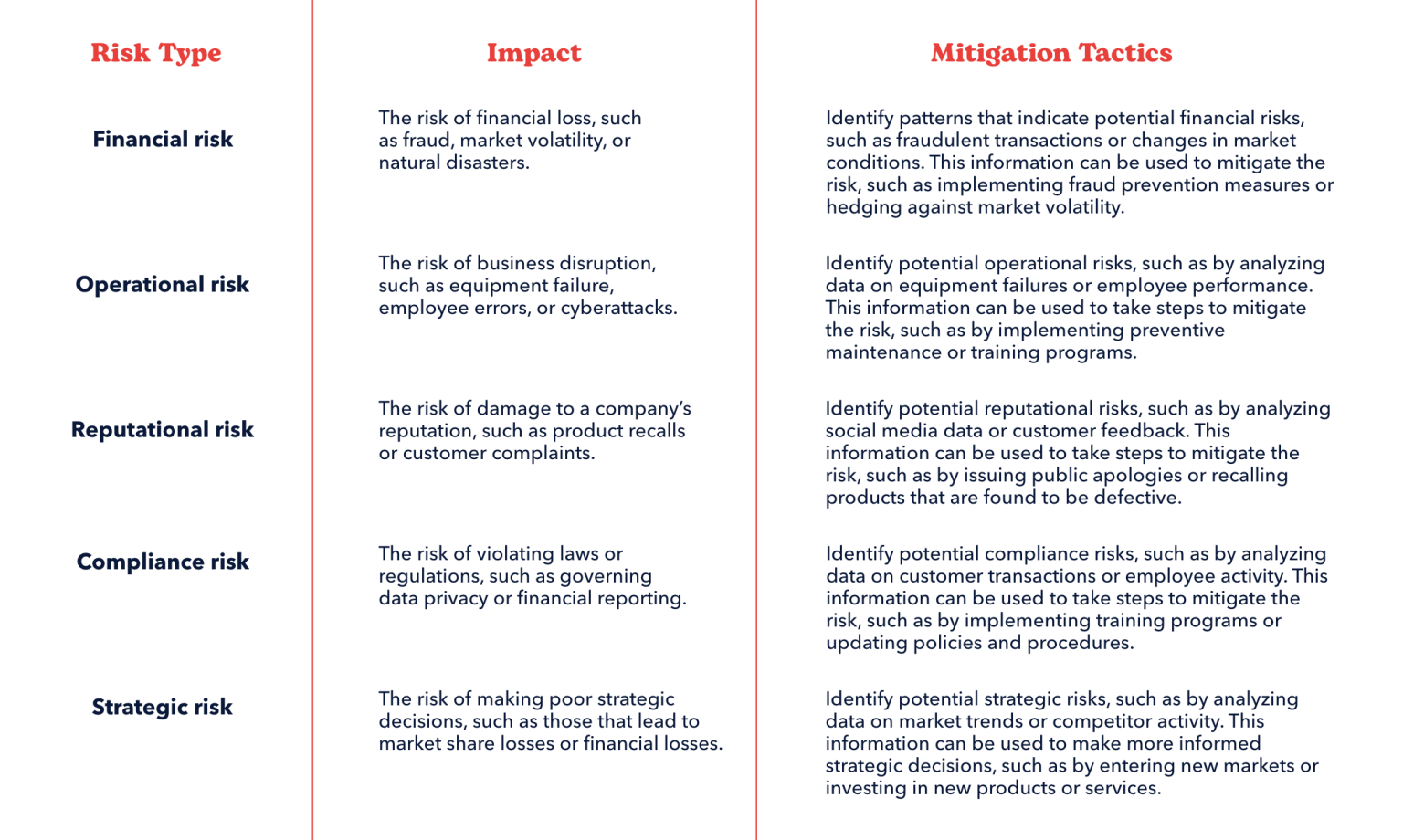The Top 4 Advantages of Predictive Analytics in Business Decision-Making
Business Intelligence
When it comes to your business’s decision-making, using predictive analytics brings major advantages.

For businesses today, there’s no shortage of available data. At the drop of a hat, businesses can pull up their web traffic, social media engagement, email opens, CTR, you name it. Often, the issue isn’t having access to this data, but rather, what to do with all of it.
If this is true of your business, you aren’t alone. In a recent survey by Pecan AI, “more than 4 out of 5 marketing executives report difficulty in making data-driven decisions despite all of the consumer data at their disposal. The same number of respondents (84%) say their ability to predict consumer behavior feels like guesswork.”
But there’s an upside: By effectively analyzing the data they already collect, businesses can make more informed decisions built on the insights gained from this evaluation. But how can a business do this? Where do you start?
One of the best methods is predictive analytics.
In many cases, leveraging predictive analytics can feel like having a crystal ball at your disposal. Read on for four reasons this method is a must-have for your business’s decision-making.
Understanding Predictive Analytics
First things first, what exactly is predictive analytics? Harvard Business School defines it as, “the use of data to predict future trends and events. It uses historical data to forecast potential scenarios that can help drive strategic decisions.” This can be done manually or by using algorithms. There are many techniques that go into this process, including statistics, machine learning, and AI, but the end result is the same: informed predictions about the future made by evaluating the past.
Many industries are already putting predictive analytics to work. In fact, a 2022 study by MicroStrategy found that 52% of companies worldwide leverage advanced and predictive analytics.
Here are a few examples:
Though these are super-specific examples, there are also universal benefits that can give your business an advantage. Let’s examine a few.
Anticipate Trends by Observing Patterns
As LinkedIn explains, “Predictive analytics uncovers hidden patterns and relationships within data that might not be apparent through traditional analysis.” This can help businesses understand their consumers more deeply.
Entrepreneur.com provides many use cases for how this increased consumer understanding and ability to predict trends can help organizations get ahead. For example, when a company knows which of its customers will likely respond well to a specific product or service, it can plan marketing campaigns or initiatives with that audience in mind and target them directly. It can also help companies know how to arrange information on websites or better support customers who are likely to require extra customer service.

Better Mitigate Risk
Medium states predictive analytics “has the power to transform risk management. It can scan thousands of data sets and understand past trends to point out vulnerabilities and transformations in the industry. The perfect balance of AI, predictive modeling, and machine learning along with statistics allow business managers to uncover relationships and patterns in both structured and unstructured data.”
Still, knowing the risks means nothing if there isn’t a response strategy in place. Medium stresses the importance of having a risk mitigation framework to “accurately identify, assess, treat and place adequate controls to resolve or accept the risks.”
Even when the risk is something uncontrollable, like the weather, predictive analytics can help companies avoid total chaos. Whether it’s a negative impact (flooding destroyed crops) or a seemingly positive one (a heat wave caused iced tea sales to skyrocket), not having a response plan in place can spell disaster.
Aon, a global professional services firm for risk, reinsurance, retirement, and health solutions, uses a brewery example: “[Breweries’] revenue predictions depend on the weather. Satellite weather station information can provide weather records down to a few square meters, which enables the risk to be much more accurately predicted and priced. With more sophisticated weather forecasting, breweries can take out tailored insurance products which protect their revenue forecasts from the risk of loss of earnings due to an unusually wet summer.”
In addition to helping businesses explore insurance options for risk mitigation, this form of predictive analytics seamlessly aligns with our next advantage: improving resource allocation.
Improve Resource Allocation
Much like the hospitality example above, predictive analytics can help businesses successfully allocate resources by predicting what will be needed in the future. As XenonStack explains, “Organizations can optimize inventory levels, production planning, and supply chain management by analyzing historical data and predicting future demand. This ensures that resources are allocated efficiently, reducing costs and improving overall operational efficiency.”
Revisiting the brewery example, if a brewery foresees a potential setback during summer due to inclement weather, along with the acquisition of tailored insurance products, they can proactively adjust their inventory. This preparation helps them avoid excessive unsold inventory by the season’s end, effectively averting reduced profits.
Inform Strategic Decision-Making
Perhaps predictive analytics’ biggest advantage is that it informs true strategic decision-making. No longer must decisions be made through intuition or “best guesses.” Instead, decision makers can evaluate various scenarios, assess potential outcomes, and confidently make data-driven decisions that align with organizational goals.
The best part? This shift to informed decision-making sustains itself over time as the business continues capturing and analyzing its incoming data. Per XenonStack, “Predictive analytics facilitates a culture of continuous improvement within organizations. By monitoring and analyzing key performance indicators (KPIs), organizations can identify areas for improvement, measure the impact of interventions, and make data-driven adjustments. This iterative process helps organizations refine their decision-making processes and enhance overall performance.”
Conclusion
At Ideas Collide, we know predictive analytics is the way to the digital future, driving impact across all aspects of a business. As we outlined in our recent article on data visualization with predictive analytics, you can harness your marketing intuition with predictive data and innovative insights to accurately prepare your marketing forecasts.
But we also know that kicking off the process can feel daunting, and knowing where to invest your resources can be a challenge. We’re here to eliminate those barriers by becoming an extension of your team, utilizing our knowledge, experience, and resources for your benefit. In fact, we have an entire team dedicated to it: our ICIQ business intelligence and strategy team.
Using our ICIQ analytics platform, our team will deliver actionable, data-driven insights through a centralized, intuitive experience, and help your organization confidently accelerate your strategic decision-making. We’ll provide self-service dashboards that offer automation, data-driven sales and marketing funnels, and intelligent audience segmentation solutions — designed with you in mind — so you can achieve measurable outcomes.
“Predictive analytics offers businesses a unique opportunity to glimpse into their future endeavors with precision,” shares Erika Tapia, Business Intelligence Analyst at Ideas Collide. “By harnessing historical data and advanced algorithms, organizations can navigate complexities with confidence, leading to smarter, more impactful decisions.”
Remember that crystal ball we mentioned? We’ve got one, and we’re eager to share it with you. Drop us a line today — we’d love to see how we can help predict your future.
Predictive analytics facilitates a culture of continuous improvement within organizations.